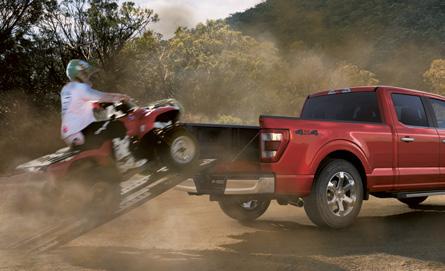
4 minute read
Auto news
drive
24 / AUTO NEWS 27 / 0–100 REVIEW: KIA EV6 28 / MCLAREN ENGINEERING 30 / ROAD TEST: HYUNDAI SONATA 35 / THE VALIANT R-SERIES TURNS 60
Sci-fi scooter

BMW is launching its first production electric scooter on the Australian market in the form of the radical-looking BMW CE 04. Looking like it’s ridden right of the set of Ridley Scott’s 1982 sci-fi masterpiece Blade Runner, the scooter showcases next-generation BMW design, technology and connectivity. Featuring a liquid-cooled 31kW permanent magnet electric motor and an 8.9kWh battery, the CE 04 is good for a range of approximately 130km. It can accelerate 0–50km/h in just 2.7 seconds, with a maximum speed of 120km/h. The air-cooled lithium-ion battery can be charged using a regular household socket, or via a wallbox or public charging station. Flat to full charging take four hours and 20 minutes on a household plug, or the optional quick charger will charge in one hour and 40 minutes. The BMW CE 04 is priced from $20,350.
P For more visit bmwgroup.com
auto news. The latest developments in the car world

That’s a bit rugged
In the US they’re known as ‘rugged electrics’ – electrified versions of heavy-duty pickups and off-roaders like the GMC Hummer and Sierra, which are lining up against rivals from specialist EV brands like Rivian and Tesla.
Ford, long the market leader in the full-size US pickup market, won’t be left behind, with an EV version of the F-150 pickup, the F-150 Lightning, due Stateside later this year. Ford says it has no plans to launch the F-150 Lightning locally, despite announcing production of petrol V6-powered F-150s in Melbourne from next year. The move will make the Blue Oval a contender in the growing full-size pickup market here, which last year amounted to more than 6000 sales. The F-150 will be remanufactured from left- to right-hand-drive in Melbourne by RMA Automotive, and will be sold through Ford Australia’s dealer network. The F1-50 will be sold in a single Crew Cab body style, but will be available in two highgrade trim levels, XLT and Lariat. Both are powered by a 3.5-litre EcoBoost petrol V6 good for 298kW and 678Nm torque and boasting a 4.5-tonne braked towing capacity.
For more, visit ford.com.au


NUMBER CRUNCH EVs in Australia
The latest State of Electric Vehicles report released by the Electric Vehicle Council highlights continued growth in EVs and chargers in Australia but also that we continue to lag the rest of the developed world in the switch to electrification.
20,665
The number of plug-in EVs sold in in 2021, triple the number sold in 2020 but still only 2% of new vehicle sales.
12,094
The number of Tesla Model 3 sales in 2021; well ahead of the second-placed MG ZS EV on 1388 sales.
$2000
The amount Tasmanians can save on an EV, thanks to the state’s stamp-duty exemption.
291
The number of EV fastcharging locations around Australia, with 700 more expected over the next five years, each with multiple charging bays.


All aboard the hydrogen highway

Trucks fuelled by renewable hydrogen are increasingly being mooted as one solution to solving the emissions challenge presented by Australia’s road transport sector, which is estimated to account for 16% of the nation’s annual greenhouse gas emissions. While hydrogen fuel cell electric vehicles (FCEVs) and even hydrogenfuelled combustion engines are proven technologies, the challenge in Australia and elsewhere right now is a lack of hydrogen refuelling infrastructure. But an agreement struck recently between the Victoria, New South Wales and Queensland governments aims to help change that, by dedicating $20 million to the development of renewable hydrogen refuelling stations along the Hume, Pacific and Newell Highways by 2026. Renewable hydrogen is made with energy from sources such as wind and solar which is then stored as hydrogen gas. The Federal Chamber of Automotive Industries believes there is strong potential for hydrogen to eventually be costcompetitive with diesel, which currently powers around one-third of Australia’s new vehicles.
Nissan’s back-up plan
As EVs gain in popularity and market share around the world, a question being asked is “what happens to the batteries when they reach the end of their useful life?” It’s a reasonable one too, particularly given the potential for the batteries to become major pollutants if they end up in landfill. One solution favoured by EV makers is to turn recycled batteries – which can still have up to 80% of their original capacity – into power walls, or stationary storage systems, that can be used for a variety of applications. Nissan recently a project using recycled Nissan Leaf batteries to enhance the grid stability of a conventional power plant in Melilla, Spain. Melilla has a population of almost 90,000 and is powered by a plant that is isolated from the national grid. Its new back-up generator is composed of 48 used Nissan Leaf batteries and 30 new ones and can inject energy into the town’s electricity grid for 15 minutes, which is enough time to restart the power supply.














